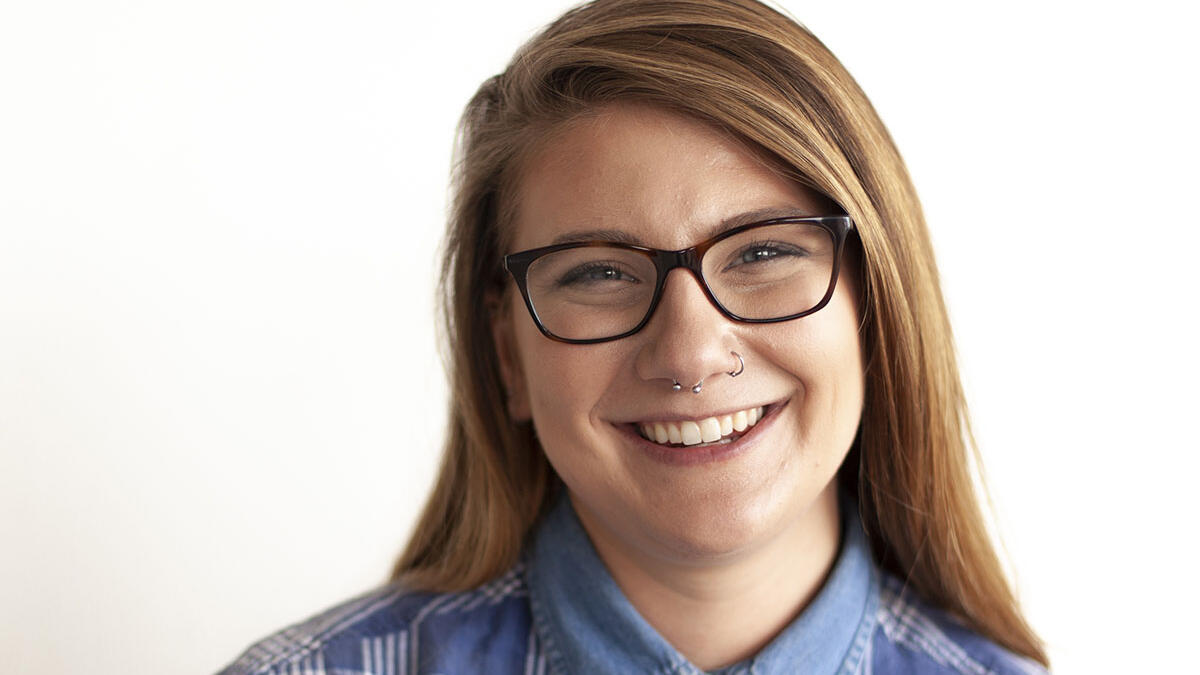ASU Peace Corps Prep program primes Sun Devils for volunteer service abroad

Meghan Hiryak will graduate from ASU in December and serve with the Peace Corps beginning in spring 2019. Photo by August Tang
Thousands of Americans every year contribute their time and abilities to communities around the world through service in the Peace Corps. This spring, Arizona State University senior and Barrett, The Honors College student Meghan Hiryak will become one of them, helping to fulfill the Peace Corps’ mission of promoting world peace, friendship and understanding between Americans and people from other countries.
Hiryak will graduate this December with her degree in women and gender studies from ASU’s School of Social Transformation and in March will depart for her assignment in Guatemala, a move she began preparing for with ASU’s Peace Corps Prep Program.
The ASU Peace Corps Prep program helps students acquire the knowledge, skills and experience needed to serve in the U.S. Peace Corps. It is open to all majors and is flexible with options that allow students to join through their senior year.
“ASU’s program is designed for students to explore opportunities in Peace Corps, determine which ones align with their career goals and prepare for their desired position through targeted coursework and experiential learning,” said Claire Michael, Peace Corps Prep coordinator at ASU.
Michael said the Peace Corps created the prep program for students to obtain sector-specific skills, foreign language proficiency, intercultural competence and professional savvy and leadership. As volunteers, they have the option to focus their service in a range of areas including education, health, community economic development, environment, youth in development and agriculture.
ASU offers two program options including a for-credit option recognized by both ASU and Peace Corps, as well as a non-credit option that is recognized by Peace Corps alone. Both options increase participants’ competitiveness for Peace Corps service (and the global workforce) by pairing coursework with sector-related service and professional development opportunities.
ASU’s program also offers a range of support for students in an effort to make their experience as relevant and useful as possible. Some of these developments include a dedicated ASU Mentor Network Group for Peace Corps Prep Students and Coverdell Fellows; a canvas organization providing resources for students’ academic, career and Peace Corps goals; and a monthly newsletter focused on opportunities, events and articles meant to broaden students’ understanding of the prep program’s goals.
Hiryak took a Peace Corps Prep class during her sophomore year and applied for the program this year as a senior. Growing up in a military family, she lived in many different places, including Skopje, Macedonia, which is where she first encountered the Peace Corps. Her upbringing, as well as her passion for travel, especially in developing countries, inspired her to pursue the program.
“I actually kind of lost sight of my goal to apply to the Peace Corps through the rest of my years in school, but after living in Peru this summer I was reminded of my love for this kind of work and decided to apply,” Hiryak said.
Hiryak will complete three months of pre-service training and will then be assigned to a specific community in Guatemala as a maternal and child health volunteer. She will work with women and children in either a clinic or a community setting, will survey the population to determine specific public health needs and help develop a plan of action.
Her volunteer assignment will help her develop new abilities as well as provide an opportunity to use her language skills and apply knowledge acquired through her college major.
“I am very excited to practice and continue my Spanish language skills because that will be so useful not only in country but when I return,” she said. “My gender studies degree has also really increased my knowledge of working with communities and empowering them to amplify their own voice, so I am excited to put sustainable change in a community into practice.”
The experience Hiryak has received through the Peace Corps Prep program and that she will receive during her time as a Peace Corps volunteer will also help her pursue her professional goals of working in public health and increasing diversity and access in health care.
“I hope to continue my education when I return in the medical field and work on creating a diverse and culturally competent education system for health care professionals that is inclusive of marginalized communities such as LGBT folks and people of color,” she said.
More Health and medicine
New Indigenous health dashboard offers robust database for scholars
By Nicole Greason and Kimberly Linn A team at Arizona State University’s College of Health Solutions and …
College of Health Solutions program doing its part during Salute to Service
It wasn’t always easy for Marine veteran Chuck Hale when he first returned to civilian life. But he’ll never forget the help he…

What makes human culture unique?
Why is human culture — the shared body of knowledge passed down across generations — so much more powerful than animal cultures?“…